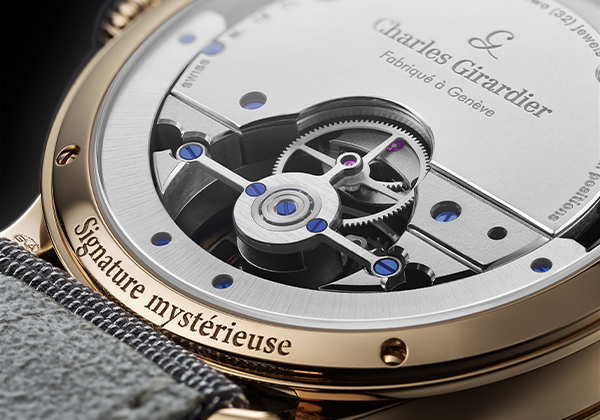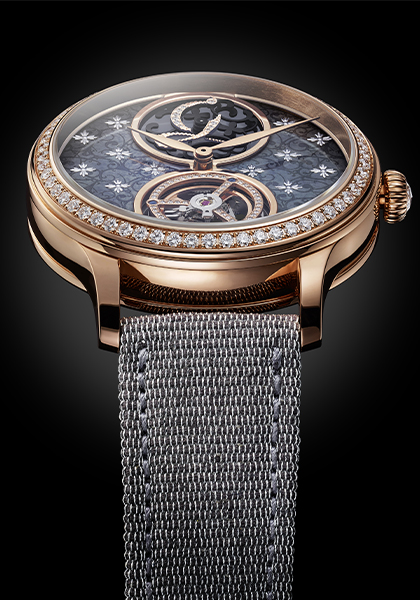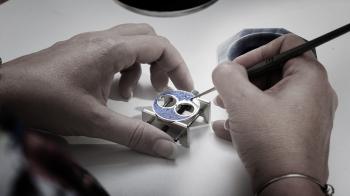“What would Charles Girardier the Elder, 18th-century watchmaker, make today?” This is the question that Patrick A. Ulm, founder of the brand, asked himself. In his time, the watchmaker Charles Girardier used grand feu enamel extensively, and favoured whimsical mechanical displays in his watches. To bring Girardier’s talent back to life, the Collection Tourbillon Mystérieuse possesses an enamel dial, animated by a patented mechanism, the “signature mystérieuse”. To further adorn the feminine models, Ulm wanted to incorporate enamel paillons — and not just any paillons, but those made in the traditional way. It was a real challenge, since the know-how required to produce these paillons has been all but lost today. To meet the needs of high-end watchmaking, old stocks of paillons are highly sought after, and have become increasingly rare.

The Art Of Gold-Leaf Stamping
However, in a chance encounter that came at just the right time to satisfy Patrick A. Ulm's wish, the dialmaker of GVA Cadrans, Charles Girardier's sister company in the Régence group, managed to obtain a number of antique paillon stamps. By a double stroke of luck, he was also able to obtain a set of instructions for their use, set down by the widow of the paillonneur to whom they had belonged. The result: these paillons, struck in the traditional way on gold leaf barely 30 microns thick, present a thorough relief.

The Translucence Of An Enamel Ocean
“We had to relearn all these old, forgotten skills. Paillon-making, first of all. Then, our enamellers undertook several attempts before attaining the hues of enamel that we wanted, which are not the usual shades you see in enamel today. Finally, we also had to learn how to fix the paillons within the grand feu enamel,” says Patrick A.Ulm. The first step is to use the flinqué technique, to apply grand feu enamel on an engraved gold dial. A mixture of fine vitreous enamel powder and water is deposited via a tiny brush. This is followed by four successive coats of coloured translucent enamel, each coat fired in a kiln at temperatures of over 800°C. The paillons are then positioned using a glue, made according to traditional methods — composed of pectin that comes from crushed apple pips — that is subsequently vaporised by the heat of the kiln. Finally, six coats of transparent colourless enamel (known as “fondant”) are added, always with the requisite kiln firing process at each stage. The delicacy of grand feu enamel, compounded with each firing, confers upon each dial a translucent depth often described as “vibrant”, with colours that remain unmuted even after centuries.

In the feminine model of the Tourbillon Mystérieuse, the engraving pattern was inspired by a decorated balance bridge in a historical Charles Girardier pocket watch. A contemporary chevron pattern adorns the masculine version, repeated in the texture of the leather strap as well as the woven strap options. These woven straps are produced by workshops in France that specialise in traditional Jacquard-loom weaving.
As for the movement, artisanal decorations are once more in focus. These are traditional grained finishes, with silver powder gently brushed onto the nickel silver plates, as well as hand-polished internal angles on the bridges. How much is too much, when it comes to finishing? Clearly, for Charles Girardier, there’s no such thing!





